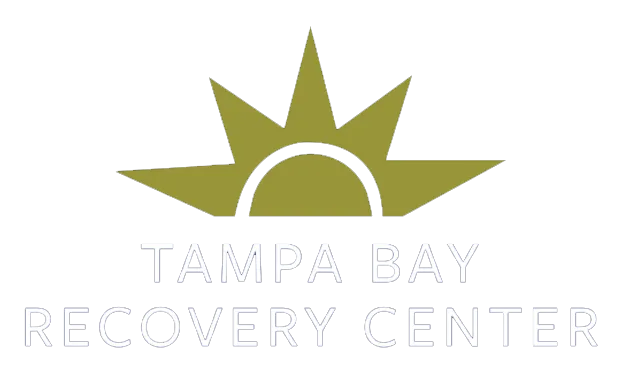You may not have heard of PAWS before – but if you’re trying to end your use of alcohol or another drug, you need to know what this acronym represents. Important questions about PAWS include what is it, how does it affect people in recovery, and how long does PAWS last?
What Is PAWS?
PAWS stands for post-acute withdrawal syndrome. It is sometimes also referred to as prolonged or protracted withdrawal.
This syndrome encompasses a variety of symptoms that can persist for an extended period after the typical withdrawal timeline, which is also known as the acute phase of withdrawal.
PAWS can affect people who are trying to stop using a variety of addictive substances, including alcohol, opioids, benzodiazepines, and stimulants.
What Happens During PAWS?
The type and intensity of a person’s withdrawal symptoms can be influenced by several factors, including:
- Their age, gender, and metabolism
- Their overall physical and mental health
- Which drug they had become addicted to
- The amount and frequency of their substance use
- If they have gone through withdrawal before
In general, the withdrawal process can be divided into two phases, acute and post-acute (or PAWS).
Acute Phase
Acute withdrawal can involve both physical pain and psychological discomfort. Depending on the factors listed above, symptoms during this phase may include:
- Powerful cravings for the substance
- Fatigue and lethargy
- Headache
- Fever and chills
- Stomach ache
- Nausea, vomiting, and diarrhea
- Pain in muscles and bones
- Tics or tremors
- Anxiety
- Depression
- Agitation and irritability
- Loss of appetite
- Disrupted sleep
- Vivid nightmares
Post-Acute Phase
Most physical withdrawal symptoms subside during the acute phase, though some people may continue to struggle with fatigue, lack of energy, insomnia, and/or lingering pain during PAWS.
The majority of PAWS symptoms are cognitive or psychological, such as:
- Continued cravings
- Anxiety and/or depression
- Lack of motivation
- Anhedonia, or difficulty experiencing pleasure
- Dysphoria, or a general sense of dissatisfaction with life
- Emotional numbness
- Forgetfulness
- Impaired focus and concentration
- Difficulty solving problems or making decisions
How Long Does PAWS Last?
As with the types of withdrawal symptoms that a person experiences, the duration of these symptoms can also be influenced by the factors mentioned earlier in today’s post.
Length of the Acute Phase
In general, the acute phase of withdrawal typically takes a week or two:
- Initial withdrawal symptoms will usually begin to develop within six to 48 hours after a person stops using the drug that they have become addicted to.
- Once they have begun, symptoms frequently intensify over the next three to five days. During this period, additional symptoms may also occur.
- After they reach their peak, symptoms should slowly begin to dissipate. It may take five to 10 days for most symptoms to subside.
In most cases, the acute phase constitutes the entirety of a person’s withdrawal experience. Though they may have a few lingering effects, they will usually be minor and manageable.
For others, though, the end of the acute phase is followed by the extended distress of PAWS.
Duration of PAWS
Though the acute phase of withdrawal can be quite painful, it usually follows a somewhat predictable timeline. The knowledge that symptoms will soon subside can be a source of both comfort and motivation for patients.
Unfortunately, the question, “how long does PAWS last?” does not offer a similar level of reassurance.
For some people, PAWS symptoms endure for a few weeks or months. For others, they persist for several months or even multiple years.
Even experts have had difficulty establishing a definitive PAWS timeline:
- A July 2022 review in the Journal of Studies on Alcohol and Drugs noted that post-acute withdrawal syndrome can persist “for 4-6 months or longer.”
- A March 2022 article in The Journal for Nurse Practitioners reported that PAWS symptoms can “fluctuate over time and may go away weeks, months, or years after withdrawal.”
- A May 2025 study of PAWS among people who discontinued their use of antidepressants said that research-based estimates of symptom duration “varied greatly, ranging from about 1.5 months to many years.”
Several sources put the estimated duration of PAWS at six months to two years – but as the studies cited above indicate, it is virtually impossible to provide a specific answer to the question of how long does PAWS last.
How Can I Manage PAWS Symptoms?
Since PAWS symptoms can last for a such a long time, it is extremely important to develop strategies to help you cope with symptoms. Here are a few tips that may be beneficial for you.
- Follow a healthy diet plan: Nutritious food contributes to both physical strength and mental clarity – both of which can help to minimize the disruptive effects of PAWS symptoms.
- Get appropriate amounts of exercise and sleep: Physical activity can be a great stress-reliever, while ample rest is essential for the health of your mind and body.
- Explore self-soothing techniques: Breathing exercises, yoga, meditation, and journaling are among the many healthy options for calming your mind, keeping you focused, and processing difficult emotions.
- Stay connected: Sometimes, it can be helpful to simply talk to a close friend or trusted family member about a problem you’re having. Having an effective personal support network can make the bad days a bit better, and the good ones even more special.
- Help someone else: Volunteering is an excellent way to stay active and connected, shift your focus away from your personal struggles, and make a positive difference in your community.
Finally, don’t discount the value of seeking professional help. Even if you’ve already been in detox or another program, returning for additional care isn’t a sign of failure. Instead, it is evidence that you’re willing to do whatever it takes to protect your health and maintain your recovery while dealing with long-term withdrawal symptoms.
Find PAWS Treatment in the Tampa Bay Area
Tampa Bay Recovery Center is a premier source of customized addiction treatment in Tampa for adults who have become addicted to alcohol and other substances. We also offer dual diagnosis services for patients who have anxiety, depression, and other co-occurring mental health concerns.
Our comprehensive, individualized approach includes detoxification (detox), a partial hospitalization program (PHP), and an intensive outpatient program (IOP). Working in close collaboration with a team of skilled and compassionate professionals, you can learn to manage your symptoms, resist cravings, and build a foundation for successful, long-term recovery.
To learn more or to schedule a free assessment, please visit our Admissions page or call us today.







